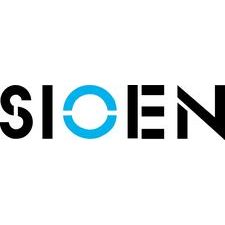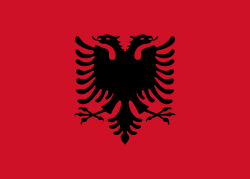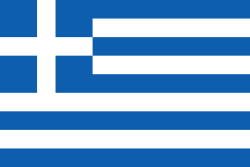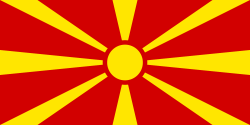Laruns Jacket with ARC protection
Your work clothes do not need to comply to EN ISO 20471 but you would still like a touch of high visibility? Then the Laruns jacket is the answer to your question. This multi-norm jacket in navy has stylish splashes of hi-vis yellow and reflective material. It also complies to many international standards like IEC 61482-2, EN ISO 11612, EN ISO 11611, EN 1149-5 and EN 13034. The jacket has an extended back making it more comfortable.
Features & design
Exterior
Straight collar
Zip closure under flap with concealed press studs
2 patched chest pockets with flap closed by concealed press studs
2 inset pockets with flap and press stud closure
2 loops for gas detectors
Round sleeves
Sleeve narrowing by press studs
Extended back
Welded, segmented reflective tape
Back length 77 cm (L)
Fabric
24% PES + 75% cotton + 1 AST; ± 250 g/m²
European Standards
IEC 61482-2 : 2009 class 1 - ATPV 8.4 cal/cm²
EN ISO 11612 : 2015 / A1 A2 B1 C1 E1 F1
EN ISO 11611 : 2015 / Class 1 - A1 A2
EN 1149-5 : 2008
EN 13034 : 2005 + A1 : 2009 Type PB [6]
EN ISO 13688 : 2013

SIOEN Apparel
Sioen produces technical apparel for many different markets where people work in circumstances where safety, comfort and protection are major issues. Professional protective clothing — all weather, high visibility, multi norm, food and cold storage 1. SIP Protection — Forestry clothing. 2. Sioen Firefighter clothing. 3. Mullion — Floatation suits and life jackets. 4. Ursuit — Professional drysuits & diving suits. 5. Sioen Ballistics — Stab, slash and bullet proof garments. 6. Baleno — Outdoor leisure wear, hunting and fishing garments.
EN ISO 11612 Heat & Flame
Letter A (EN 15025) This test consists of applying a flame to a fabric sample for 10 seconds. To pass the test, the after flame & smoulder times and formation of holes must be within the tolerances within the standard. The application of a flame can take place in two ways: Code Letter A1 Surface Ignition, ISO15025 A Procedure A (leads to Class A1), the flame is applied horizontally to the face of the fabric No specimen shall permit any part of the lowest boundary of any flame to reach the upper or either vertical edges No specimen shall give hole formation of 5mm or greater in any direction, except for an inter-lining that is used for specific protection other than heat and flame protection. No specimen shall give flaming or molten debris The mean value of after flame time shall be ≤ 2s The mean value of afterglow time shall be ≤ 2s Code Letter A1 Edge Ignition, ISO15025 B Procedure B (leads to Class A2), the flame is applied to the bottom edge of the fabric sample. No specimen shall permit any part of the lowest boundary of any flame to reach the upper or either vertical edges No specimen shall give flaming or molten debris The mean value of after flame time shall be ≤ 2s The mean value of afterglow time shall be ≤ 2s Letter B (ISO 9151) Convective Heat: determination of the heat transmission when exposed to flames. The sample is held above the flame and the rise in temperature on the topside of the sample is measured with a calorimeter. The length of time the sample can remain exposed before its temperature rises by 24 °C is determined. B1: 4 < 10 seconds, B2: 10 < 20 seconds, B3: 21 seconds and longer Letter C (ISO 6942) Exposure to Radiant Heat. In this test, a fabric sample is exposed to radiant heat (infrared rays). The temperature on the reverse (unexposed) side of the sample is registered using a calorimeter. Subsequently, the length of time the sample the sample can remain exposed before its temperature rises by 24°C is measured. The test procedure is the same as ISO 11611, but the classification is different: C1: 7 < 20 seconds, C2: 20 < 50 seconds, C3: 50 < 95 seconds, C4: 95 seconds and longer Letter D and E (ISO 9185) D = Aluminium E = Molten Iron Determining the level of protection against spatters of molten metal. A membrane (with similar properties to human skin) is attached to the reverse of the fabric sample sequentially rising quantities of molten metal (Aluminium or Iron as applicable) are splashed on the sample. The quantity of molten metal which deforms the membrane is determined. The classification for molten aluminium is: D1: 100 < 200 grams, D2: 200 <350 grams, D3: 350 grams and more The classification for molten iron is: E1: 60 < 120 grams, E2: 120 < 200 grams, E3: 200 grams and more Letter F (ISO 12127) This is a new test to establish a value for contact heat. The classification in this respect: F1: 5 < 10 seconds, F2: 10 < 15 seconds, F3: 15 seconds and longerDetails
EN ISO 11611 Welding & Allied
Standard specifies two classes with specific performance requirements. Class 1: is protection against less hazardous welding techniques and situations causing lower levels of spatter and radiant heat. Class 2: is protection against more hazardous welding techniques and situations causing higher levels of spatter and radiant heat.Details
IEC 61482-2 Protective Clothing Thermal Arc Hazards
Standard for protective clothing against the thermal effects of an electric arc event. Two different test methods: Open Arc IEC 61482-1-1 and Box test EN 61482-1-2. OPEN ARC - IEC 61842-1-1 (USA). The first result, ELIM - The maximum incident energy (cal/cm²) the garment can withstand before the wearer would have a 0% probability of a second degree burn. The second result is either: ATPV (Arc Thermal Performance Value, cal/cm²) The maximum incident energy the garment can withstand before the wearer would have 50% probability of a second degree burn or EBT (Energy Break Open Threshold, cal/cm²) The incident energy at which a 50% probability of a breakopen occurs resulting in a second degree burn. Since ELIM indicates an energy value at 0% probability of a second degree burn and ATPV/EBT at 50% probability, the ELIM value is usually lower than ATPV/EBT. Large differences between the ELIM and ATPV/EBT results highlight the importance of wearing several layers of garments to ensure you are properly protected. EN 61482-1-2 (Europe) is evaluated in two classes in the same test: APC1 protects against electric arc of 4kA (arc energy 168 kJ), APC2 protects against electric arc of 7kA (arc energy 320 kJ). Unlike the American standard, there is not a result scale in this garment tests, only two levels where the garment either passes or fails. A garment with one layer of Flame Retardant fabric usually passes APC 1 - even thin shirt fabrics. To pass APC 2, a system with two or three fabric layers or a lined garment is normally required. This makes it more difficult to adapt the protection to the risk, without compromising on comfort. As APC 1 is a relatively low level of protection, we always recommend a basic protection of at least 8 cal/cm².Details
Treated FR Garments
FR treated fabrics are based on cotton, blended with polyester, para-aramid or polyamide. These fabrics get their FR property from the chemical treatment that is applied to the fabric. This chemical treatment is executed in such a way that it fully penetrates the fiber and as such is bonded throughout the entire fabric. As a result of this treatment, the fabric becomes flame retardant and keeps this property during the lifetime of the garment. PROS: very good protection against molten metal, good protection against heat and ARC, relatively cheap, good value for money in dirty environments where expected lifespan is not very long. CONS: wash fastness is typically not very good (pale look after several washes), to achieve similar FR properties as inherent FR the fabrics typically become a bit heavier and therefore tend to be a bit less comfortable.Details
Share this product:
| Color | 217 Sailor blue/Hi-vis yellow or 249 Navy/Hi-vis yellow |
| Garment Size | 44 or 46 or 48 or 50 or 52 or 54 or 56 or 58 or 60 or 62 or 64 |
Once the user has seen at least one product this snippet will be visible.





